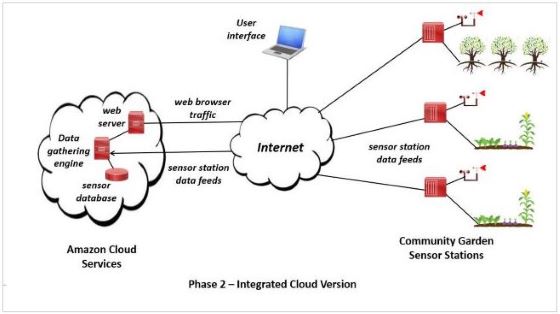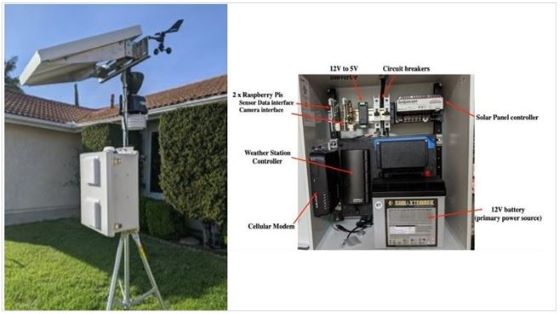How it Works
Our division, L&RT, will provide sensors that collect data such as soil moisture, temperature, humidity, air temperature, wind speed and more. This data will be monitored, queried, and made into reports and alerts that will inform garden leaders and service learning leads on where to focus efforts and resources.
Phase 1
The first iteration of the garden system started with the data collection at the Raspberry Pi stations, which accessed the Internet over WIFI and passed through the data gathering engine. Afterwards, it was imported to the database and through the webserver, which grabbed that data and provided it to the user. In this first phase, each step was processed by the Raspberry Pi.
Phase 2
Phase 2 also started with the data collection at the Raspberry Pi stations. These stations then accessed the Internet over a cellular connection, and passed through an AWS virtual machine. Inside AWS, the data gathering engine, sensor database, and webserver work alongside the other.
Weather Station
The image above shows the Davis weather station and its inner controls. This is where the additional Raspberry Pi sensors will be stored and protected from the weather. To make the station more self-sustainable, other devices such as the cellular modem, batteries, voltage regulators, etc are used. This is necessary as the garden may not have any WIFI or power outlets within reach.


